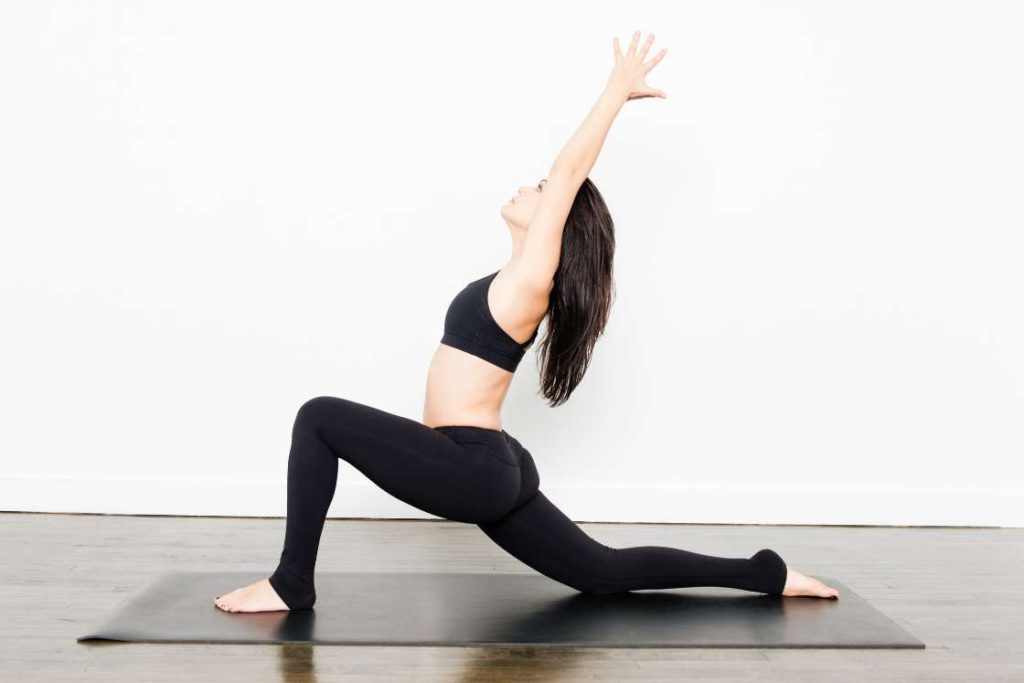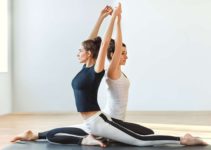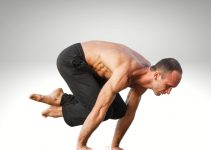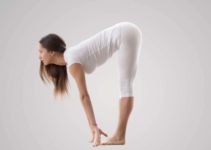
If, after waking up in the morning, you are experiencing stiffness in your lower back for more than 30 minutes, then there is a chance that you might be exposed to a chronic autoimmune condition called Ankylosing Spondylitis.
Ankylosing Spondylitis (AS) is a type of arthritis of the spine. It is an inflammatory condition that causes small bones in the spine (vertebrae) to fuse, which over time can make the spine curve forward.
Many of the stretches and postures in yoga have a direct impact on strengthening muscles that support the spine vertebrae discs, facet joints, and ligaments. It is said that the more the body of an AS patient is in movement, the better it is in the relief of symptoms. Regular movements in the joints through yoga can significantly impact pain and stiffness thus can improve the quality of life of AS patients.
Keep on reading to know the causes and yoga postures to treat AS.
What Causes Ankylosing Spondylitis?
Although the cause of Ankylosing Spondylitis is yet unknown, research shows that inheritance plays a major role in acquiring the illness. National Axial Spondyloarthritis Society (NASS) [efn_note] Facts & figures https://nass.co.uk/about-as/as-facts-and-figures/ [/efn_note] states that most people that suffer from AS are carriers of the HLA-B27 gene.
Doctors believe that the HLA-B257 incites the immune system to attack some common bacteria in the body and thus set off AS symptoms [efn_note] Role of HLA-B27 in the pathogenesis of ankylosing spondylitis https://www.ncbi.nlm.nih.gov/pmc/articles/PMC5364987/ [/efn_note]. It can be said that about 90% of people who have AS test positive for the HLA-B27 gene.
However, only 2% of the carriers are inflicted with the illness. This number rises (to about 20%) if a first-degree relative is affected.
Ankylosing Spondylitis is more susceptible in males than in females. It is usually seen in young males in the age group 20 to 30 years. An older medical study found that 80% of people with AS felt that stress triggered “flares” (return of symptoms after a brief period of remission).
How Yoga Helps With Ankylosing Spondylitis?
As Ankylosing Spondylitis is a chronic condition, there is no effective cure for it. However, there are treatments and remedies that help alleviate pain. Gentle exercising stretches of yoga is integral for relieving pain. Yoga exercises aim to maintain balance in the body through strength and flexibility. It is found that mobility helps overcome pain. The more the patient moves, the lesser chances there are for flares. Yoga is an effective therapy to help lessen the pain caused by AS.
James, a patient of Axial Spondyloarthritis (axial SpA), shares in his story at the National Ankylosing Spondylitis Society (NASS) [efn_note] Managing my axial SpA (AS) flares https://nass.co.uk/wp-content/uploads/2019/11/Managing-my-axial-SpA-AS-flares.pdf [/efn_note]:
“I find regular exercise most valuable in controlling my axial SpA (AS) stiffness. If my symptoms flare up suddenly and intensely, I do 10 – 15 minutes of Pilates and yoga exercises that I learnt at my local NASS branch. This often reduces my pain levels.”
Yoga includes many postures for A.S. treatment that have proven successful in relieving the symptoms. It strengthens the body and improves flexibility in the joints. Not only this but Yoga also opens the ribcage, allowing better breathing and abdominal muscles involvement to support the back.
Several studies have shown that AS not just affects a person physically but also has psychological effects on them. People with AS, amongst other effects, have an increased risk of depression and anxiety compared to the general population.
Pranayama along with simple meditation relaxes the mind. The person exercising the discipline gradually becomes aware of his control over his symptoms. A 2012 study reported that Yoga promotes relaxation and thus reduces anxiety. One can overcome the emotional side effects that result from chronic conditions like AS.
Yoga as an “ageless science” evokes relaxation in the minds of patients suffering from chronic pain and calms the compound progressive distress of AS, giving the patients a better quality of life.
4 Yoga Poses For Ankylosing Spondylitis Pain Relief
1. Crescent Lunge (Ashta Chandrasana)
Crescent Lunge is a gentle backbend pose that stretches the entire spine. It also stretches the legs, groin, hip flexors and shoulders.
- Stand straight with your feet hip distance apart
- Come into a forward lunge – Extend your left foot back. Bring your knee (left) down to rest on the floor. While doing so, bend your right thigh parallel to the floor.
- Bend your upper body forward and place your hands on the floor, on either side of your right foot. Keep your gaze forward.
- Now lift your left knee off the floor and balance your left leg on your toes.
- Lift your hands from the floor and place them on your thigh, four fingers above the knee.
- Straighten your torso and square your hips with the floor. Straighten your rear leg and back.
- Stretch your hands over your head and interlock the fingers. Bend your head back and look up at your hands. Feel the stretch in your hand and hold the pose for a few seconds.
2. Cat Cow Pose (Bitilasana Marjaryasana)
Cat cow pose improves posture and gently warm up the spine — ideal for those with back pain. The pose increases flexibility in the neck, shoulders and spine vertebrae.
- Come on to all fours. Ensure your hands are right under your shoulders and knees are hip distance apart.
- Push your belly towards the floor, lifting your shoulders and hip slightly towards the roof. Push back your shoulders while thirsting your palms on the ground and arms straight
- Look towards the roof in such a way that the neck is falling back.
- Stay in the position for a few seconds
- Bring your shoulders and hips to the natural original position. Invert the pose and push your rib cage towards the roof.
- Bring your gaze down, bend your neck forward and look at your thighs.
- Hold the pose for a few seconds and then repeat a few times.
3. Child’s pose (Balasana)
The child’s pose is a resting stretch for the body.
This pose relaxes and gently stretches the back of the practitioner. It stretches the entire spine including from the thighs, hips, back, arms, shoulders and neck.
- Come on your fours. Ensure your hands are right under your shoulders and knees are hip distance apart.
- Thirst your palms on the floor and without lifting them, lower your glutes to rest your heels. Bend your upper body to rest against your thighs. Feel the stretch in your back.
- Bend your neck forward and rest your forehead on the floor in front of your knees.
- Rest your elbows on the floor.
4. Bridge Pose(Setu Bandha Sarvangasana)
The bridge pose is a back bend position that can be used as a preparatory pose for advanced bends.
The pose stretches the spine, neck, thighs and hip flexors. In addition, the pose also opens the chest, heart and shoulders.
- Lay down on your back. Rest your arms at your sides,
- Bend your knees and keep your feet hip width apart. Try to bring your heels right under your knees.
- Press your feet and palms on the floor and lift your hips up. Lift your hips until your knees, hips and shoulders are in a straight line. Try to engage your thighs to hold your pose.
- Interlock your hands under your body and hold the pose for a few seconds.




